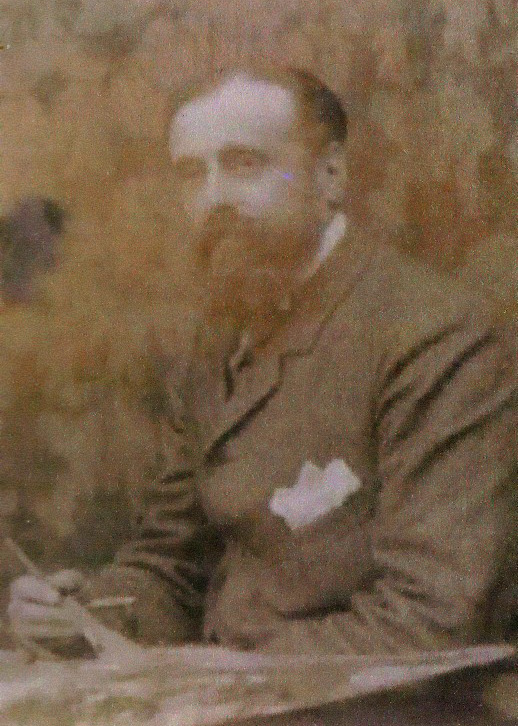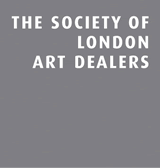Maurice Chabas (1862 - 1947)
- AVAILABLE ARTWORKS FOR SALE
For more available works please contact us on stern@pissarro.com or +44 (0)20 7629 6662.
 Credit: anonymous
Credit: anonymous
French symbolist painter Maurice Chabas was born in Nantes 1862. Despite his manifest passion and talent for painting, Chabas, as the eldest of three boys was, in the first instance, obliged to inherit the family business upon coming of age. Despite his filial responsibilities, Chabas did end up studying at the Académie Julian, as did his two brothers, under the instruction of such artists as Tony Robert-Fleury (1837 – 1911) and William Bouguereau (1825 – 1905). As a result, Chabas was able to debut at the Salon des Artistes Français in 1885, an event at which he would continue to exhibit until 1913.
Despite exhibiting at the Galerie des Arts Réunis in 1895, Maurice Chabas’ symbolist compositions remained relatively unknown until his relocation to Neuilly-sur-Seine in 1900. Amidst a plethora of intellectuals and other significant cultural figures, Chabas’ guests included Nobel Prize laureates Maurice Maeterlinck (1862 – 1949) and Charles Richet (1850 – 1935). In 1914, Chabas hosted Judith Gautier (1845 – 1917), the first woman to be allowed to exhibit, by means of derogation, at the Salon de la Rose-Croix. In this period, at the height of La Belle Époque, Chabas exhibited at l’Exposition Universelle in Paris in 1900, and again in Brussels in 1910. Early signs of Chabas’ artistic interest in the mystic and the spiritual appear in 1913, when he exhibited at the Galerie Devambez under the title ‘Vers l’Amour Supreme’. Chabas was also extensively involved in architectural decoration at this time, winning, for instance, the commission to decorate the new town hall at Vincennes in 1902.
Chabas remained a prominent artistic figure in interbellum France. He co-founded the Salon de Tuileries in 1923, alongside artists such as Charles Dufresne (1876 – 1936). By this time, Chabas had already begun to experiment with elements of the neo-impressionistic style. It was during this period, however, that he began in earnest to place particular emphasis on the spiritual elements of his paintings. In a letter of 1935, Chabas writes, ‘Humanity as it is currently requires a higher ideal. We can no longer live in imbalance creating the disharmony that leads to destruction and death. It takes the Spirit to give life to matter and works’. This increasing concern for the spiritual was perhaps compounded by his close friendship with Cubist painter and engraver Jean Marchand (1883 – 1941) with whom Chabas was known regularly to converse on such topics. It was also in this interval that, in recognition of his achievements, Maurice Chabas was invested as a Chevalier of the Légion d’Honneur.
After the death of his celebrated brother Paul in 1937, Chabas’ paintings tended ever more greatly to a form of luminous abstraction, drawing inspiration almost exclusively from religious subjects. In the last years of his life, Maurice Chabas became something of a recluse, segregating himself from the outside world, including his family devoting himself to his contemplation of the relationship between art, the spiritual and the divine. He would sustain this hermitic mode de vie until his death in Versailles in December 1947.
Read more
Despite exhibiting at the Galerie des Arts Réunis in 1895, Maurice Chabas’ symbolist compositions remained relatively unknown until his relocation to Neuilly-sur-Seine in 1900. Amidst a plethora of intellectuals and other significant cultural figures, Chabas’ guests included Nobel Prize laureates Maurice Maeterlinck (1862 – 1949) and Charles Richet (1850 – 1935). In 1914, Chabas hosted Judith Gautier (1845 – 1917), the first woman to be allowed to exhibit, by means of derogation, at the Salon de la Rose-Croix. In this period, at the height of La Belle Époque, Chabas exhibited at l’Exposition Universelle in Paris in 1900, and again in Brussels in 1910. Early signs of Chabas’ artistic interest in the mystic and the spiritual appear in 1913, when he exhibited at the Galerie Devambez under the title ‘Vers l’Amour Supreme’. Chabas was also extensively involved in architectural decoration at this time, winning, for instance, the commission to decorate the new town hall at Vincennes in 1902.
Chabas remained a prominent artistic figure in interbellum France. He co-founded the Salon de Tuileries in 1923, alongside artists such as Charles Dufresne (1876 – 1936). By this time, Chabas had already begun to experiment with elements of the neo-impressionistic style. It was during this period, however, that he began in earnest to place particular emphasis on the spiritual elements of his paintings. In a letter of 1935, Chabas writes, ‘Humanity as it is currently requires a higher ideal. We can no longer live in imbalance creating the disharmony that leads to destruction and death. It takes the Spirit to give life to matter and works’. This increasing concern for the spiritual was perhaps compounded by his close friendship with Cubist painter and engraver Jean Marchand (1883 – 1941) with whom Chabas was known regularly to converse on such topics. It was also in this interval that, in recognition of his achievements, Maurice Chabas was invested as a Chevalier of the Légion d’Honneur.
After the death of his celebrated brother Paul in 1937, Chabas’ paintings tended ever more greatly to a form of luminous abstraction, drawing inspiration almost exclusively from religious subjects. In the last years of his life, Maurice Chabas became something of a recluse, segregating himself from the outside world, including his family devoting himself to his contemplation of the relationship between art, the spiritual and the divine. He would sustain this hermitic mode de vie until his death in Versailles in December 1947.

